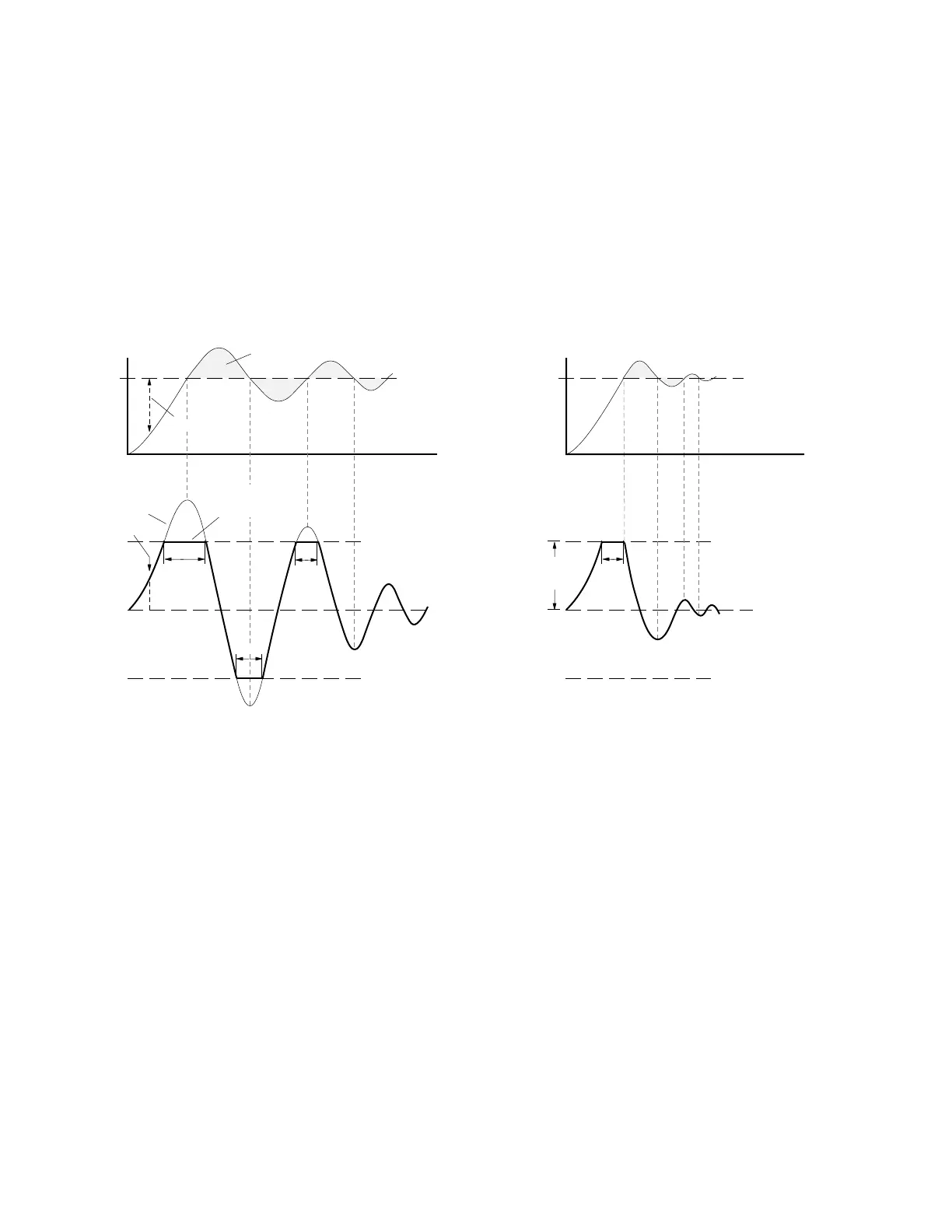80
APEX615n Installation Guide
Controlling Integral
Windup
If integral control (SGI) is used and an appreciable position error has persisted long enough
during the transient period (time taken to reach the setpoint), the control signal generated by
the integral action can end up too high and saturate to the maximum level of the controller’s
analog control signal output. This phenomenon is called integral windup.
After windup occurs, it will take a while before the integrator output returns to a level within
the limit of the controller’s output. Such a delay causes excessive position overshoot and
oscillation. Therefore, the integral windup limit (SGILIM) command is provided for you to
set the absolute limit of the integral and, in essence, turn off the integral action as soon as it
reaches the limit; thus, position overshoot and oscillation can be reduced (see illustration
below). The application of this feature is demonstrated in Step 5 of the Controller Tuning
Procedure below.
Without SGILIM
Max. Analog Output (+10V)
Min. Analog Output (-10V)
0V
Windup
Duration
(wd)
wd
wd
Internal
Integral
Value
Integral at T
1
T
1
Position
Time
Actual Output
Generated
by the Integral Term
Position Setpoint
(D Command)
Position Overshoot
Position Error at T
1
With SGILIM
Max. Analog Output (+10V)
Min. Analog Output (-10V)
0V
Integral
Windup Limit
(SGILIM)
Position
Time
wd
Position Setpoint
(D Command)
Velocity Feedback Control (SGV)
When velocity feedback control is used, the control signal is proportional to the feedback
device’s velocity (rate of change of the actual position). The Servo Gain Velocity (SGV)
command sets the gain, which is in turn multiplied by the feedback device’s velocity to
produce the control signal. Since the velocity feedback acts based upon the feedback device’s
velocity, its control action essentially anticipates the position error and corrects it before it
becomes too large. Such control tends to increase damping and improve the stability of the
system.
A high velocity feedback gain (SGV) can also increase the position tracking error when
traveling at constant velocity. In addition, setting the velocity feedback gain too high tends to
slow down (overdamp) the response to a commanded position change. If a high velocity
feedback gain is needed for adequate damping, you can balance the tracking error by applying
velocity feedforward control (increasing the SGVF value—discussed below).
Since the feedback device’s velocity is derived by differentiating the feedback device’s position
with a finite resolution, the finite word truncation effect and any fluctuation of the feedback
device’s position would be highly magnified in the velocity value, and even more so when
multiplied by a high velocity feedback gain. When the value of the velocity feedback gain has
reached such a limit, the motor will chatter (high-frequency, low-amplitude oscillation) at
steady state.
Artisan Technology Group - Quality Instrumentation ... Guaranteed | (888) 88-SOURCE | www.artisantg.com

